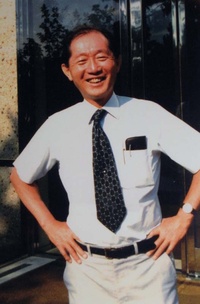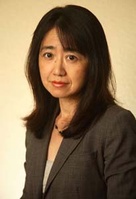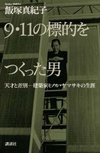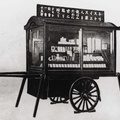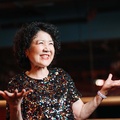Los Angeles-based journalist Iizuka Makiko's new book, "The Man Who Made the Target of 9/11" (published by Kodansha) in August 2010, has a provocative title that draws attention. The "target of 9/11" refers, of course, to the World Trade Center (hereafter referred to as WTC), which collapsed in the terrorist attacks on September 11, 2001. The architect of the WTC was Minoru Yamasaki, a second-generation Japanese-American, and the protagonist of the book.
Yamasaki was born in a Seattle slum in 1912 to Issei parents who had immigrated from Toyama. Despite facing racial discrimination, his father worked tirelessly as a stockman at a shoe store and as a cleaner at a chocolate factory on his days off, to send his son to the University of Washington.
My parents' favorite phrase was, "We're Japanese, so it can't be helped." Living in poverty is because we're Japanese, and being limited to behind-the-scenes work is because we're Japanese.
While working in a cannery in Alaska during summer vacations to help pay for his tuition, Yamasaki excelled and graduated with a degree in architecture in 1934. His choice of study was influenced by his uncle, Kimiaki, who studied architecture at the University of California.
He would normally have found a job in construction, but it was a tough task for a Japanese-American like Yamasaki. While his white classmates, who had lower grades than him, were finding jobs one after another, Yamasaki headed to New York, simply because there was less racial discrimination there than on the West Coast. He finally got a job there as a packer at a trading company dealing in Japanese pottery.
If, like his father, he had given up on his career in architecture, saying "it can't be helped because I'm Japanese," he would never have achieved his later success, and the WTC would have been a completely different building. Yamasaki did not give up, and after winning a design competition in the architecture department and going on to graduate school at night school, he joined his long-desired architectural firm four years after graduating from university. One year later, he moved to a major architectural firm known for designing the Empire State Building, where his talent blossomed and his achievements were recognized. After further stints at a famous firm in Detroit, he finally went independent in 1949.
Yamasaki's reputation as an architect was on the rise. Recognized as a leading architect for the shell structure of the St. Louis Airport and the controversial Reynolds Building, Yamasaki had become a face in the local community, and would be greeted with applause when he entered a Detroit restaurant. He was at the peak of his career in 1962 when he was selected as the architect for the WTC.
In this work, Iizuka-san has traveled around the places and people associated with him, and has succeeded in carefully highlighting the true face of Yamasaki that has not been widely known until now. When asked what it was about Yamasaki that attracted him as an author, Iizuka-san answered, "His unconventional way of life, like that of Japanese men of the past, which is no longer found in Japan today."
"He was by no means smart, but he had a human side to him, expressing his emotions straightforwardly. It's rare to find someone with charisma these days, but I think Yamasaki had a magnetic strength that made the staff want to follow him. I believe that strength came from Yamasaki's own passion for architecture. I was also moved by his uncompromising attitude, forging ahead even at the cost of self-sacrifice."
I have a connection with Ms. Iizuka, a senior from the same hometown, and she told me while she was writing this book, "I want to finish it, but I'm so busy with magazine work that I can't seem to get it done." Then, after seven years of research and writing, it was only when the book was finished that I saw the title "The Man Who Made the 9/11 Targets," and as I wrote at the beginning, I was impressed that she had come up with such an exquisite title.
Unfortunately, Japanese people living in Japan rarely pay attention to their fellow Japanese people living abroad. However, the inclusion of the keyword "Target of 9/11" is sure to draw the attention of many people. Even if the trigger is 9/11, if people pick up this book and end up learning about the outstanding abilities and fascinating personality of Japanese-American architect Minoru Yamasaki, then the title strategy will be a success.
The WTC no longer exists, and Yamasaki himself passed away in 1986, but I am heartily congratulated that the record of his passionate life has been preserved in this book.
© 2010 Keiko Fukuda


